TLDR;
Teething problems
New challenges
Versioning
Hints for non-native speakers
Common mistakes
Discourse variations
Support stories
Rehearsing mock interviews
Soviet_montage_theory
Teething problems
New challenges
Versioning
Hints for non-native speakers
Common mistakes
Discourse variations
Support stories
Rehearsing mock interviews
Soviet_montage_theory
Use of prompt engineering in preparing job interviews
Do your answers in a job interview sound artificial, as though learnt by heart? How can AI help you avoid pitfalls of narrative patterns such as STAR, CARL, Minto / McKinsey Pyramid, etc?
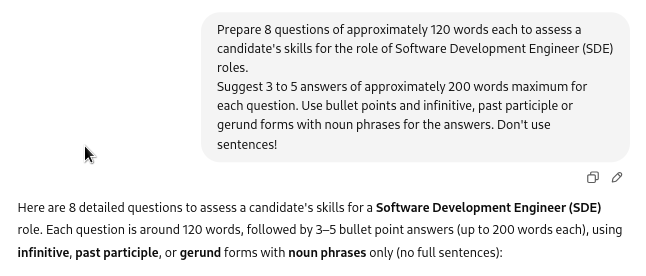
TLDR;
Prepare 12 questions of approximately 120 words each for a job interview at (...).
Suggest 3 to 5 answers of approximately 200 words maximum for each question.
Use bullet points and infinitive, past participle or gerund forms with noun phrases for the answers.
Don't use sentences!
Use unmarked register, be polite but not distant or condescending.
(...)
-
✓ rehearse delivery by changing the order of bullet points & discourse markers
(...)
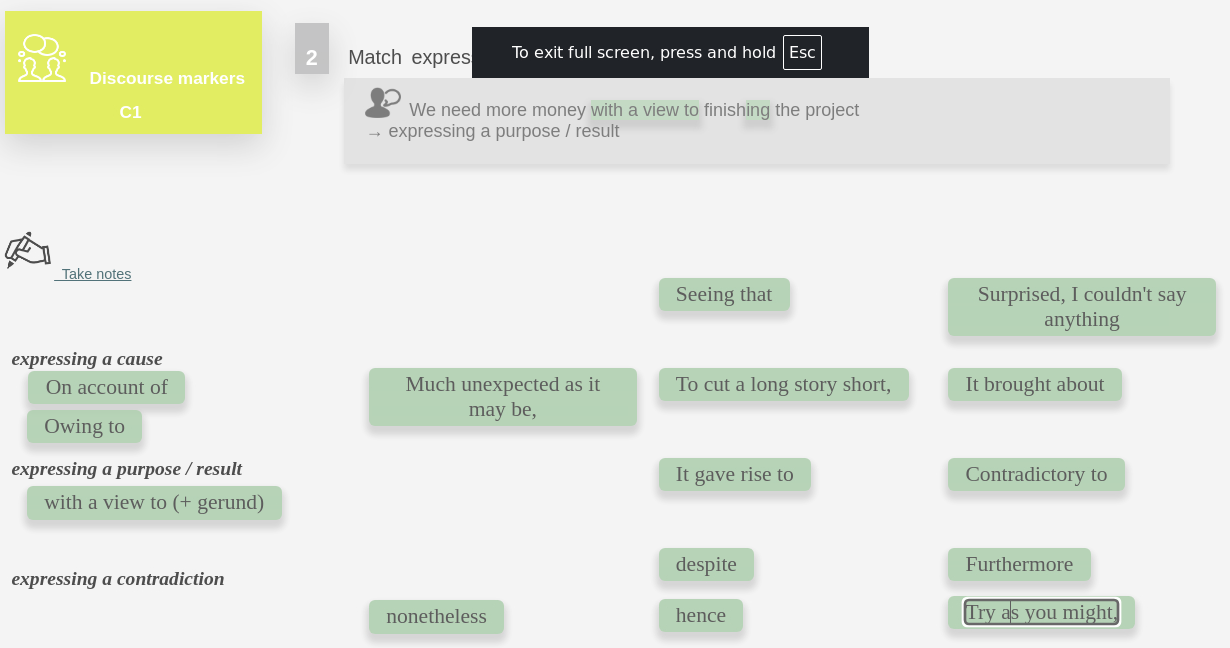
Teething problems
-
✓ background check at preliminary stages (pre-screening)
✓ during the highly-competitive hard skills stage
✓ when going through behavioural questions relevant to team matching
- ✓ literally ask AI to check your answers for grammar and spelling mistakes
✓ ask to refine language
〆sound like a native speaker can be quite vague though...
New challenges
- → systematically request details for a position in a given region, corporate culture, etc
e.g. Suggest arguments for a start-up in Europe featuring a Teal organisation
e.g. Suggest arguments for a big tech in the USA featuring a strong commitment to EDI (BrEn) | DEI (AmEn)
- → limit each question to approximately 150 words
→ ask for suggested answers with no more than 300 words
Versioning with AI
- ✓ ask for 15 questions but select only the 10-12 most relevant ones
→ this step is already giving you an idea of what support stories you will need because some questions and answers will overlap
- ✓ rephrase the same question
e.g. for a junior, middle and senior position
→ this should indicate what achievements you'll have to focus on in your support stories to target your desired level
Hints for non-native speakers
✓ use unmarked language
→ avoid phrasal verbs which can be confusing for non-native speakers
✓ suggest no more than 3-5 buzzwords relevant to this industry
→ avoid excessive jargon
✓ emphasise success with one or two positive adjectives only
→ don't use emphatic language
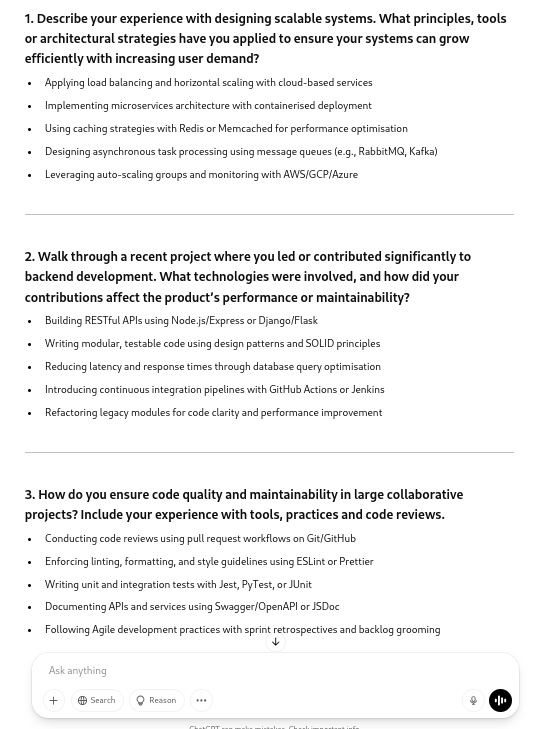
Common mistakes
- ✓ you need more questions than you will have time for at interview because you should also be ready for different stages with a variety of interlocutors
〆AI can help rephrase your soft skills or re-focus on metrics of a particular success story, but follow-up questions of a human recruiter will soon point to little experience in a given field
- 〆don't use AI to write prose or else you are likely to learn by heart
While I was responsible for developing all the documentation in this start-up
I developed and supported different user guides.
I also created tasks to rewrite sections with bounce rates exceeding 30%.
- ✓ ask AI to break down your ideas into short sentences which you can improvise with more easily:
• responsible for developing all the documentation in this start-up
• developed and supported different user guides
• created tasks to rewrite sections with bounce rates exceeding 30%
Bullet points force the speaker not to read support stories like prose
Discourse variations
Prepare 12 questions of approximately 120 words each for a job interview at (...)
Suggest 3 to 5 answers of approximately 200 words maximum for each question.
Use bullet points and infinitive, past participle or gerund forms with noun phrases for the answers.
Don't use sentences!
Use unmarked register, be polite but not distant or condescending.
(...)
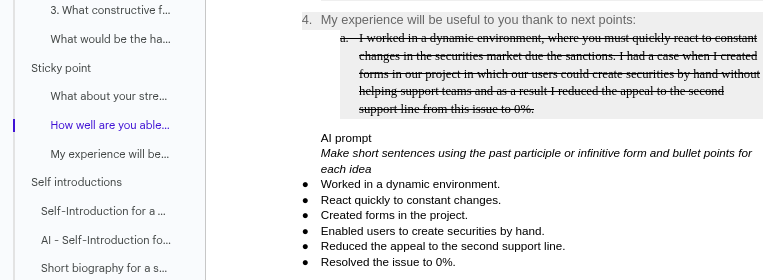
Support stories
- ✓ identify each support story clearly (e.g. use heading 3 formatting for each question)
✓ use googledocs table of contents navigation (on the left hand side) to jump to a story without having to scroll through pages of notes
✓ practise oral delivery with bullet points instead of dense paragraphs
✓ consider highlighting metrics in a different colour to facilitate legibility
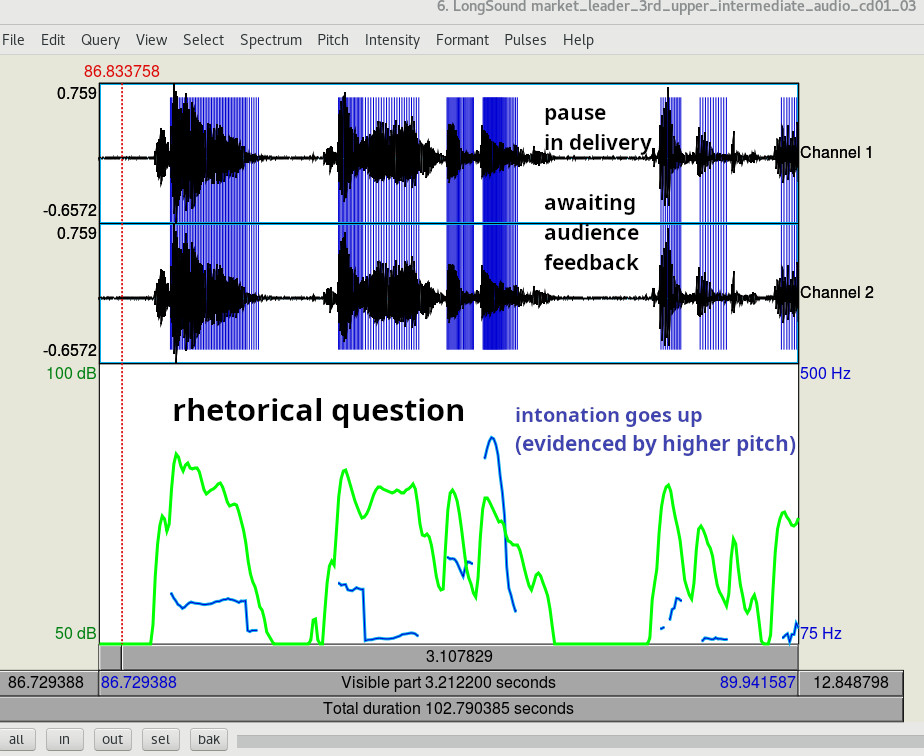
Rehearsing mock interviews
This is when coaching with your sparring partner really begins.
- ✓ rehearse delivery by changing the order of bullet points, ensuring a cohesive flow with discourse markers (so, therefore, although...) & various narrative patterns
e.g. start with metrics to make an impact (Bottom Line Up First)
I rewrote sections with bounce rates exceeding 30%!
OR
e.g. start with results (i.e. the conclusion) to interest your listener (Minto / McKinsey Pyramid)
We developed and supported different user guides successfully despite some hurdles.
OR
e.g. use STAR to narrate professional experience
In those days I was responsible for developing all the documentation in this start-up. (= situation)
✓ use fluency markers to pretend you are thinking aloud
e.g. Er, Hmm, Well, let me think...
- → engage your listener in a more natural conversation by asking simple (rhetorical) questions
e.g. Would you like to know more? Shall I continue or have you got any questions?
- ✓ paraphrase key expressions / buzzwords related more specifically to your industry
✓ use Maieutics (Socratese method) to elicit possible weaknesses
✓ enquire about implicit aspects which are not voiced in the answer
e.g. Did you run any script to automagically collect comments embedded in the code of developers?
(...)
→ look for variations in pitch to show rhetorical questions, repeated patterns suggesting assertiveness...

Soviet montage theory vs discourse variations
If you want to pass an interview you have to create conditions to sound more natural
In other words, include opportunities for different interpretations
In conclusion, do not rely on perfect, ready-made answers and learn them by heart
Although it is tempting to rely on perfect, ready-made answers and learn them by heart
In a job interview it's often more important to create conditions to sound more natural
that's why you need to include opportunities for different interpretations
AI prompting can include opportunities for different interpretations
therefore you shouldn't just rely on perfect, ready-made answers and learn them by heart
To get your dream job, you ought to create conditions to sound more natural
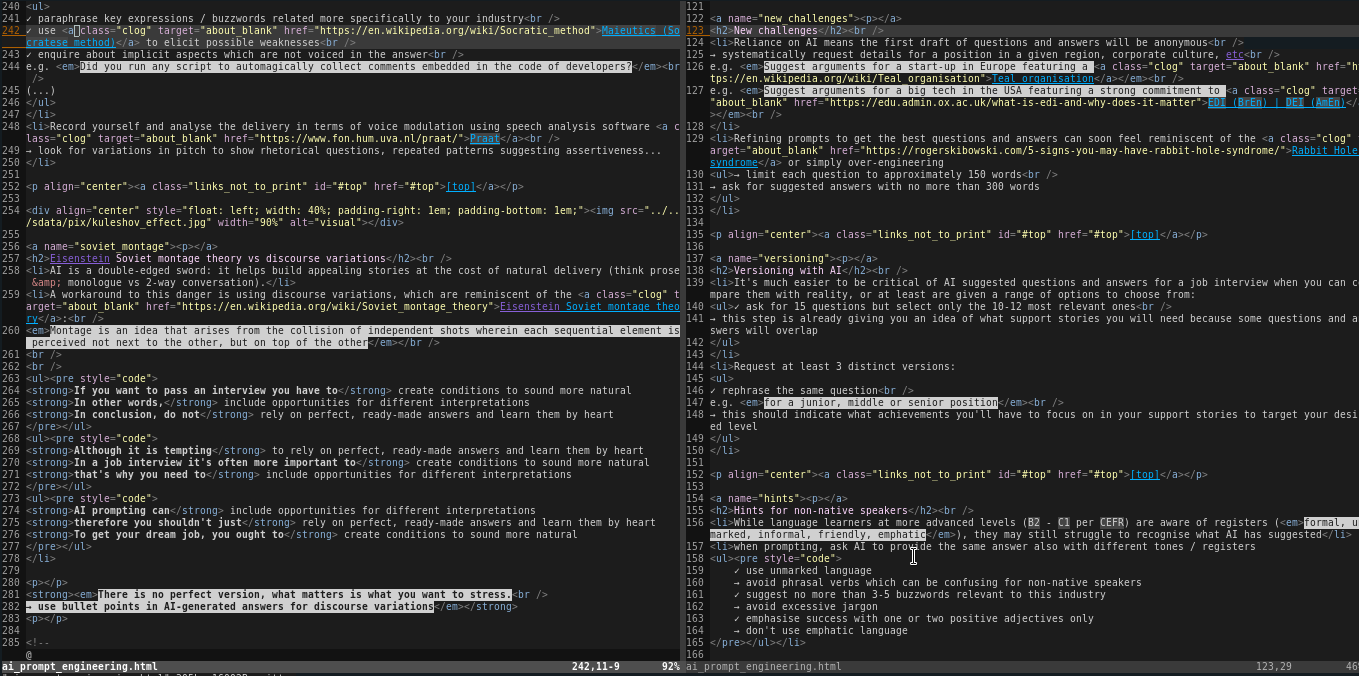
→ use bullet points in AI-generated answers for discourse variations